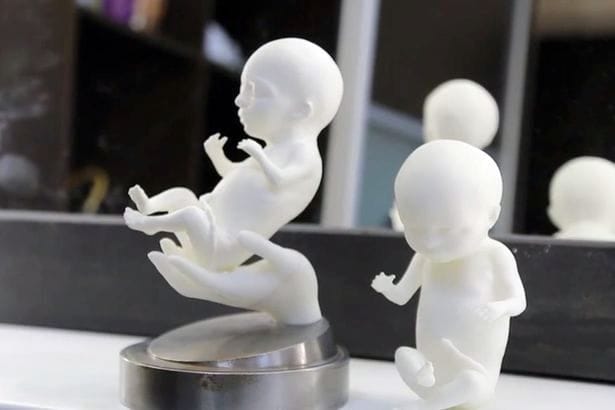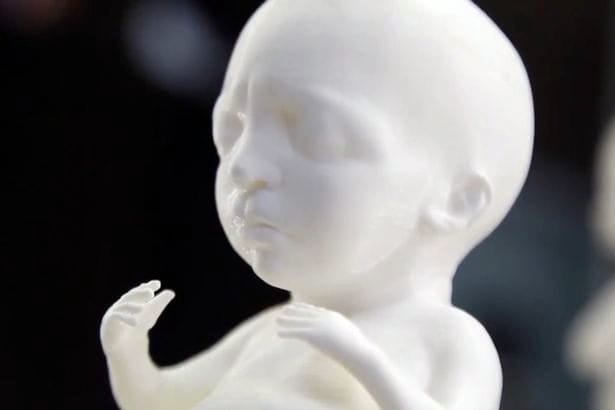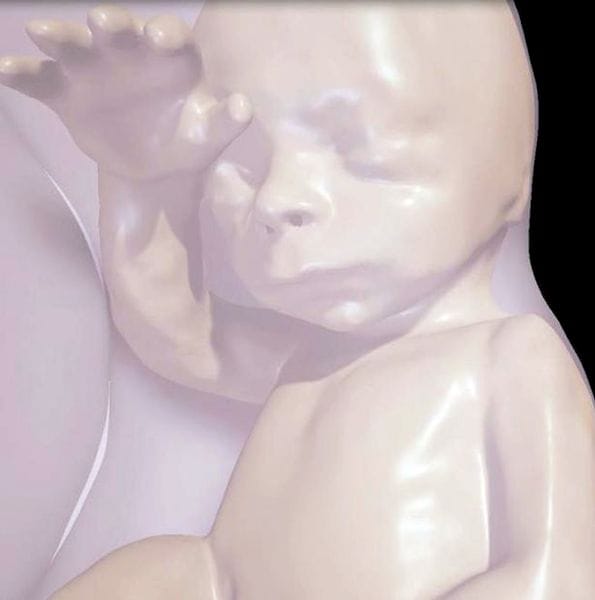
I’m reading a puzzling story on UK’s Daily Mirror that describes a company 3D printing embryo replicas.
This has been attempted in the past, so long ago I cannot find the story we surely wrote about it at the time.
The general process is to somehow obtain the 3D scan file from a medical scan of a pregnancy, transform it into a usable solid 3D model and then print it.
That appears to be the case here, although the process is not fully described. It’s being undertaken by a Russian company, 3D Embryo, for which I cannot find any significant information.

However, a reading through the confusing story suggests that they’re using an ultrasound device to obtain the 3D scan data. This is likely from a standard medical ultrasound unit and thus the output data is provided in DICOM format, a file format not very compatible with 3D printing.
It seems the company has figured out a way to easily convert the acquired DICOM data into a more usable 3D model format, but there’s more.
The printed 3D models you see here appear quite detailed and rather smooth. This does not jive with the typically coarse and poor resolution ultrasound captures I’ve seen.

Therefore it is highly likely they’re able to do some fancy transformations on the DICOM data to produce these relatively detailed 3D models. I’m not sure how they did this, but it certainly is not this:
Researchers in Brazil used the Oculus Rift virtual reality headset to transform MRI and ultrasound data into a life-like model of a foetus.
(And why are Brazilian researchers working on a Russian company’s project?)
This all seems quite mysterious – and perhaps not even for real. But if so, I am quite interested to find out more about how the company transformed rough data into such a clean 3D model.
Via Daily Mirror

